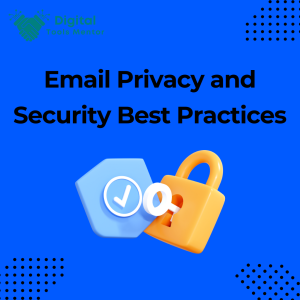Emercury Tutorial 2025
Welcome to our comprehensive guide on Emercury Tutorial , a forefront tool in email marketing as of 2025. Through this blog, we will explore the depths and breadths of Emercury, unveiling its multifaceted features and its evolutionary journey in the world of digital marketing.
Emercury, as it stands today, is not just a mere email marketing tool. It has grown into a full-fledged ecosystem, adept at meeting the diverse needs of marketers, businesses, and entrepreneurs. The year 2025 sees Emercury at the zenith of its capabilities, offering cutting-edge features that are the epitome of innovation and efficiency. Its significance in today’s digital marketing sphere is unparalleled, primarily due to its advanced automation, seamless integrations, and insightful analytics. These attributes enable users to craft highly personalized and effective email campaigns that resonate deeply with their target audience.
Reflecting on Emercury’s journey, we see a tool that has consistently been a trendsetter. It has transitioned from a basic email service provider to a comprehensive marketing platform. This remarkable evolution is characterized by the adoption of AI-driven analytics, a plethora of enhanced template designs, and sophisticated segmentation tools. Emercury has continually adapted to the changing tides of email marketing, showcasing a relentless commitment to innovation and a keen understanding of the evolving needs of marketers.
The purpose of this blog is twofold. Firstly, it serves as a detailed, user-friendly tutorial for those venturing into the world of email marketing or looking to refine their existing strategies using Emercury. Secondly, it aims to provide a rich source of insights and practical tips, ensuring that by the end of this guide, readers will be well-equipped to harness the full potential of Emercury in their email marketing endeavors.
Join us as we embark on this enlightening journey through Emercury’s features and functionalities, poised to transform the way you perceive and execute email marketing.
Getting Started with Emercury
Step 1: Signing Up
First things first, head over to the Emercury website. Here, you’ll find a prominent “Sign Up” button. Clicking on this will lead you to a registration form. Fill in the basic details such as your name, email address, and a secure password. Once you’ve agreed to the terms and conditions, hit the ‘Create Account’ button. You’ll receive a confirmation email shortly. Verify your account by clicking on the link in the email, and voila, your Emercury journey begins!
Step 2: Setting Up Your Account
Upon your first login, Emercury greets you with an intuitive setup wizard. This wizard is a godsend for beginners, guiding you through the essential steps of setting up your account. You’ll be prompted to enter information about your business or marketing campaign, like your website URL and contact details. This information is crucial as it helps Emercury tailor your experience.
Step 3: Navigating the Dashboard
Once your account setup is complete, you’ll land on the Emercury dashboard. This is where the magic happens. The dashboard is designed to be user-friendly, but let’s go over some key areas:
- Campaigns: Here’s where you create and manage your email campaigns.
- Lists: This section allows you to manage your subscriber lists.
- Reports: A crucial area where you can analyze the performance of your campaigns.
- Automation: This tab is where you can set up automated emails and workflows.
Spend some time familiarizing yourself with these sections. Click around, explore the sub-menus, and don’t hesitate to use the ‘Help’ feature if you need more information on a specific area.
Step 4: Exploring Additional Features
Emercury is packed with features, from basic email template designs to advanced segmentation tools. As you get comfortable with the basic navigation, start exploring these features to understand how they can enhance your email marketing campaigns.
Quick Navigation Tips
- Use the Search Bar: Located at the top of the dashboard, the search bar is a quick way to find what you’re looking for.
- Customize Your Dashboard: Emercury allows you to customize the dashboard view according to your preferences, making it easier to access frequently used features.
- Shortcut Menus: Keep an eye out for shortcut menus that offer quick access to common tasks and settings.
Getting started with Emercury is just the beginning of an exciting email marketing journey. With its user-friendly interface and plethora of features, you’re now ready to dive deeper into creating impactful email campaigns.
Creating Your First Email Campaign in Emercury
Step 1: Defining Your Campaign
- Access the Campaigns Section: Start by navigating to the ‘Campaigns’ tab on your Emercury dashboard.
- Create a New Campaign: Click on the ‘Create New Campaign’ button. You’ll be prompted to choose between different types of campaigns – standard, automated, or A/B testing. For your first campaign, a standard email is a great starting point.
Step 2: Crafting Your Email
- Selecting a Template: Emercury offers a range of pre-designed templates. Choose one that aligns with your message and brand identity. Alternatively, you can create a design from scratch using the drag-and-drop builder.
- Customizing Your Content: Add compelling content to your email. This includes a catchy subject line, engaging body text, and visually appealing images. Ensure your content is concise, relevant, and aligned with your campaign goals.
- Personalization: Utilize Emercury’s personalization features to address subscribers by name or include specific details relevant to them. Personalized emails often yield higher engagement rates.
Step 3: Audience Selection
- Choose Your Recipients: Select the subscriber list you wish to target. Emercury allows for advanced segmentation, enabling you to target specific subsets of your audience based on criteria like demographics, past engagement, etc.
Step 4: Review and Send
- Testing Your Email: Before sending, use the ‘Send Test Email’ feature to preview how your email looks in various email clients.
- Scheduling: Choose to send your campaign immediately or schedule it for a later date and time.
- Launch: After reviewing, click ‘Send’ to launch your campaign.
Tips for Designing Effective Email Templates
- Keep it Simple: Avoid clutter. Use a clean, simple design that makes your message stand out.
- Brand Consistency: Ensure your email design reflects your brand colors, fonts, and style. Consistency helps in building brand recognition.
- Mobile Responsiveness: Design your emails to be mobile-friendly, as a significant portion of users read emails on mobile devices.
- Use of Images: Incorporate images strategically. They should complement your text and not overpower it. Remember to add alt text for accessibility.
- Clear Call-to-Action (CTA): Your email should have a clear, compelling CTA. Whether it’s to visit a website, make a purchase, or subscribe, make it stand out.
- Readable Text: Use fonts that are easy to read and keep your text concise. Break your content into short paragraphs with subheadings for easier scanning.
- Test and Iterate: Use A/B testing for different elements like subject lines, CTAs, and images. Analyze the results and refine your approach based on what works best.
List Management in Emercury
Effective list management and segmentation are key to the success of any email marketing campaign. In this section, we’ll delve into strategies for building and managing your subscriber lists in Emercury, and how you can utilize segmentation for more targeted marketing.
Building Your Subscriber List
- Capture Email Addresses Legally: Start by collecting email addresses through your website, social media, or in-person events. Always ensure compliance with privacy laws and obtain explicit consent.
- Use Sign-Up Forms: Utilize Emercury’s customizable sign-up forms on your website or landing pages. These forms can be integrated easily and are a great tool for capturing new subscribers.
- Offer Incentives: Encourage sign-ups by offering incentives like free ebooks, discounts, or access to exclusive content.
Managing Your Subscriber List
- Regularly Update Your Lists: Keep your lists clean by regularly removing inactive subscribers and updating information as needed. This improves engagement rates and email deliverability.
- Organize Your Lists: Use tags or categories to organize your subscribers based on criteria like location, engagement level, or how they signed up. This makes managing and targeting your lists easier.
Segmentation for Targeted Marketing
Segmentation involves dividing your subscriber list into smaller groups based on specific criteria. This allows for more personalized and relevant email campaigns.
Steps for Effective Segmentation
- Identify Segmentation Criteria: Decide on the basis for segmentation. This could be demographic data (age, location), behavior (purchase history, email engagement), or any other relevant criterion.
- Use Emercury’s Segmentation Tools: Emercury offers tools to segment your lists easily. You can create segments based on the data you’ve collected about your subscribers.
- Tailor Your Content: Once you have your segments, tailor your email content to meet the specific needs and interests of each group. For example, send different content to new subscribers versus regular customers.
Benefits of Segmentation
- Improved Engagement: Segmented emails are more relevant to the recipient, leading to higher open and click-through rates.
- Better Customer Experience: Personalized content makes subscribers feel valued and understood, enhancing their experience with your brand.
- Increased Conversions: By targeting specific needs and interests, segmented campaigns can lead to higher conversion rates.
By mastering list management and segmentation in Emercury, you can create more effective and targeted email marketing campaigns. Remember, the more relevant your emails are to each subscriber, the better your engagement and conversion rates will be.
Automation Features in Emercury
Automation is a cornerstone feature in Emercury, allowing marketers to streamline their email campaigns and enhance engagement with minimal manual intervention. In this section, we’ll explore how to utilize autoresponders and automated workflows in Emercury, along with setting up triggers based on subscriber actions.
Autoresponders in Emercury
- What are Autoresponders?: Autoresponders are automated emails sent in response to specific actions taken by your subscribers. For instance, sending a welcome email when someone signs up to your list.
- Setting Up Autoresponders: In Emercury, setting up an autoresponder is straightforward. Choose the ‘Autoresponders’ option from the dashboard, select ‘Create Autoresponder,’ and then define the trigger, such as a new subscriber addition. Next, craft your email content and set it live. Autoresponders are excellent for onboarding new subscribers, sending birthday wishes, or re-engaging dormant users.
Automated Workflows
- Overview of Automated Workflows: Beyond single autoresponders, Emercury offers automated workflows – a series of emails based on complex triggers and conditions.
- Creating a Workflow: To create a workflow, go to the ‘Automation’ section and start a new workflow. Here, you can define a sequence of emails with specific triggers and conditions, like a user opening an email or clicking a link. These workflows allow for more nuanced engagement based on subscriber behavior.
Setting Up Triggers Based on Subscriber Actions
- Types of Triggers: Emercury allows you to set various triggers, such as email opens, link clicks, subscriber anniversaries, or even specific dates.
- Configuring Triggers: When setting up an autoresponder or workflow, specify the trigger under the ‘trigger’ section. You can define multiple conditions for more precision. For instance, you might send a follow-up email if a subscriber hasn’t opened the initial email within a certain timeframe.
Tips for Maximizing the Impact of Automation
- Personalize Your Automated Emails: Use subscriber data to personalize your automated emails. Even simple personalization, like including a subscriber’s name, can significantly boost engagement.
- Test and Refine Your Workflows: Regularly review the performance of your automated emails and workflows. Use analytics to tweak and improve your sequences.
- Balance Automation with Human Touch: While automation is powerful, ensure your emails still have a personal and human feel. Avoid making them sound too robotic.
- Segment Your Automated Emails: Tailor your automated emails to different segments of your audience to ensure relevance.
Utilizing the automation features in Emercury effectively can transform your email marketing strategy, making it more efficient and impactful. By setting up thoughtful autoresponders and workflows based on subscriber actions, you can ensure timely and relevant engagement with your audience, driving better results for your campaigns.
Integrating Analytics and Tracking in Emercury
In the world of email marketing, the power of data cannot be overstated. Emercury’s robust analytics and tracking tools offer invaluable insights into the performance of your campaigns. This section provides a detailed guide on integrating analytics for tracking campaign performance and understanding the key metrics that are crucial to refining your strategy.
Setting Up Analytics in Emercury
- Access the Analytics Feature: Navigate to the ‘Reports’ or ‘Analytics’ section in your Emercury dashboard. Here, you’ll find a suite of tools designed to track the performance of your email campaigns.
- Linking to Web Analytics: For a more comprehensive view, link your Emercury account to web analytics tools like Google Analytics. This integration provides deeper insights into how email campaigns drive traffic and conversions on your website.
Understanding the Dashboard
- Navigating the Analytics Dashboard: The dashboard displays various metrics in an easy-to-understand format. Spend some time familiarizing yourself with the layout and the information presented.
Setting Tracking Parameters
- Customize Your Tracking: Emercury allows you to set custom tracking parameters for each campaign. This means you can track not only the performance of the campaign as a whole but also individual links within your emails.
Understanding Key Metrics
1. Open Rate
- Definition: The percentage of recipients who opened your email.
- Significance: A low open rate could indicate issues with your subject lines or send times, while a high open rate suggests that your initial engagement is effective.
2. Click-Through Rate (CTR)
- Definition: The percentage of recipients who clicked on one or more links contained in your email.
- Significance: CTR helps measure the effectiveness of your email content and call-to-action. It’s a direct indicator of engagement beyond just opening the email.
3. Conversion Rate
- Definition: The percentage of recipients who took the desired action (like making a purchase) after clicking a link in your email.
- Significance: This is the ultimate measure of your email campaign’s effectiveness in driving tangible results.
4. Bounce Rate
- Definition: The percentage of emails that could not be delivered to the recipient’s inbox.
- Significance: A high bounce rate can indicate problems with your email list health or deliverability issues.
5. Unsubscribe Rate
- Definition: The percentage of recipients who opted out of your email list after receiving an email.
- Significance: While some unsubscribes are normal, a high rate could signal content relevance issues or frequency concerns.
Utilizing Analytics for Strategy Refinement
- Regular Review: Make it a habit to regularly review your campaign performance. This helps in identifying trends and making data-driven decisions.
- Segment and Test: Use analytics to segment your audience and test different strategies. For example, if one segment shows lower engagement, try altering your content or delivery time.
- Actionable Insights: Look for actionable insights in your data. If a particular type of content has a high CTR, consider incorporating more of it in your future campaigns.
Integrating and understanding analytics in Emercury is crucial for the success of your email marketing efforts. By closely monitoring these key metrics and using the insights gained to refine your strategies, you can significantly enhance the effectiveness of your campaigns and achieve better results.
Advanced Personalization Techniques in Emercury
In the ever-evolving landscape of email marketing, personalization stands out as a key differentiator in driving engagement. Emercury offers advanced personalization techniques, allowing you to tailor your emails to the specific interests and preferences of each subscriber. This section covers how to effectively personalize your emails and utilize dynamic content for a more customized approach
Beyond Basic Personalization
- Personalization Tokens: Start by using personalization tokens in your emails. These are placeholders that automatically fill in with the subscriber’s information, like their name, company, or location.
- Behavior-Based Personalization: Go a step further by personalizing emails based on subscriber behavior. For example, send specific content to subscribers who clicked on a particular link in your previous email.
Leveraging Subscriber Data
- Gather Rich Data: Collect data through sign-up forms, subscriber interactions, and website behavior. The more data you have, the more personalized your emails can be.
- Utilize Data for Tailoring Messages: Use this data to create emails that address the specific needs, interests, and behaviors of your subscribers. For instance, if a subscriber frequently purchases a particular product, send them emails related to that product category.
Using Dynamic Content in Emails
What is Dynamic Content?
- Definition: Dynamic content refers to parts of your email that change based on the characteristics or behavior of each subscriber. It allows you to create one email template that serves multiple segments of your audience.
Implementing Dynamic Content
- Setting Up: In Emercury, you can set up dynamic content by defining rules that dictate what content is displayed to whom. For example, subscribers from different regions can receive offers relevant to their location.
- Content Variations: Create variations of content within your email, like different product recommendations, testimonials, or case studies, tailored to different segments of your audience.
Tips for Maximizing Personalization
- Start with a Clear Strategy: Define what you want to achieve with personalization. Is it more clicks, higher conversions, or better engagement?
- Segment Your List Thoughtfully: Effective personalization starts with well-segmented email lists. Segment your lists based on relevant criteria for your goals.
- Test and Optimize: Use A/B testing to see which personalization techniques work best. Continuously optimize based on the results.
- Respect Privacy: Always be mindful of privacy concerns. Use personalization in a way that respects your subscribers’ data and privacy.
By harnessing advanced personalization techniques and dynamic content, you can transform your email campaigns into highly engaging, personalized experiences for your subscribers. Emercury’s tools make it easier to implement these strategies effectively, leading to higher engagement and more successful email marketing efforts.
Conducting A/B Testing in Emercury
A/B testing, also known as split testing, is a powerful tool for optimizing email campaigns. It involves comparing two versions of an email to see which performs better. Emercury provides robust features for conducting A/B tests, enabling you to make data-driven decisions to enhance your email marketing strategies. In this section, we’ll explore how to conduct A/B tests with Emercury and offer tips for optimizing your campaigns based on the test results.
Setting Up A/B Tests
- Choose the Element to Test: Start by deciding which element of your email you want to test. This could be the subject line, email content, call-to-action, or even send time.
- Create Two Variations: In Emercury, create two versions (A and B) of your email, each with a different version of the element you’re testing.
- Select Your Testing Criteria: Define what you’ll measure to determine the winner – it could be open rate, click-through rate, or conversion rate.
- Segment Your Audience: Divide your email list into two random groups to ensure the test’s accuracy. Emercury will send version A to one group and version B to the other.
- Launch and Monitor the Test: Send out your emails and monitor the performance of each version in real-time.
Analyzing A/B Test Results
- Review Performance Metrics: After the test concludes, analyze the results in Emercury. Look at which version achieved higher open rates, click-through rates, or conversions.
- Draw Conclusions: Determine why one version outperformed the other. Was it the more engaging subject line, the different call-to-action, or the timing of the email?
Tips for Optimizing Email Campaigns Based on A/B Test Results
- Test One Variable at a Time: To accurately determine what causes performance differences, only test one element per A/B test.
- Test Regularly: The more you test, the more data you collect, which can be invaluable for making informed decisions about your email campaigns.
- Implement Learnings: Use the insights gained from A/B testing to make adjustments to your future campaigns. If a particular type of subject line consistently performs better, adopt that style in your subsequent emails.
- Consider the Big Picture: Sometimes, a test may not yield clear winners. In such cases, consider other factors like seasonality or external events that might have influenced the results.
- Iterate and Evolve: Email marketing is dynamic. Keep iterating based on test results and evolving trends to ensure your campaigns remain effective.
A/B testing is a critical component in the continuous improvement cycle of email marketing. By leveraging Emercury’s A/B testing capabilities and following these optimization strategies, you can fine-tune your campaigns for better engagement, higher conversion rates, and overall success in your email marketing endeavors.
Strategies for Using Emercury in E-commerce
In the digital age, e-commerce businesses are increasingly leveraging email marketing as a vital component of their marketing strategy. Emercury, with its versatile features, offers a plethora of opportunities for e-commerce platforms to engage with customers, drive sales, and enhance brand loyalty. This section will explore specific strategies for using Emercury in e-commerce and present examples of successful campaigns.
Personalized Product Recommendations
- Tailoring Content: Use customer purchase history and browsing behavior to send personalized product recommendations. Emercury’s segmentation and dynamic content features allow you to tailor emails based on individual customer preferences, increasing the relevance and effectiveness of your communications.
Abandoned Cart Emails
- Automated Reminders: Set up automated emails in Emercury to remind customers about items left in their shopping carts. These emails can include images of the products, a call-to-action leading back to the cart, and even a time-sensitive discount to encourage completion of the purchase.
Customer Lifecycle Emails
- Engaging at Every Stage: Create automated email sequences for different stages of the customer lifecycle – welcome series for new subscribers, appreciation emails for frequent buyers, and re-engagement campaigns for inactive customers. This approach ensures consistent engagement and maximizes customer lifetime value.
Seasonal and Flash Sales Promotions
- Timely Offers: Utilize Emercury to send out timely emails about seasonal sales, flash promotions, or special events. Segmenting your list to target specific customer groups can make these promotions more effective.
Examples of Successful E-commerce Campaigns
Example 1: Fashion Retailer
- Challenge: A fashion retailer wanted to increase repeat purchases.
- Solution: They used Emercury to send out personalized fashion recommendations based on past purchase history and browsing behavior.
- Result: The campaign saw a 25% increase in repeat purchases within three months.
Example 2: Online Electronics Store
- Challenge: An electronics store was facing high rates of cart abandonment.
- Solution: They implemented automated abandoned cart reminder emails with a small discount for completing the purchase.
- Result: There was a 40% reduction in cart abandonment and a significant increase in conversion rates.
Example 3: Specialty Food E-commerce
- Challenge: A specialty food online store wanted to increase sales during the holiday season.
- Solution: They created segmented email campaigns targeting customers with offers on products they had shown interest in, coupled with festive season discounts.
- Result: The campaign resulted in a 30% increase in sales compared to the previous holiday season.
Emercury’s diverse set of tools and features can be incredibly effective for e-commerce businesses looking to boost their email marketing efforts. By adopting strategies like personalized recommendations, abandoned cart emails, and lifecycle engagement, e-commerce platforms can significantly enhance customer engagement and sales. The outlined case studies demonstrate the practical application and success of these strategies in real-world scenarios.
Best Practices for Email Marketing with Emercury
Email marketing, when executed correctly, can be a highly effective way to communicate with your audience. However, it’s crucial to adhere to best practices and comply with email marketing laws to ensure the success and legality of your campaigns. Let’s explore important best practices for using Emercury for email marketing, as well as the key aspects of compliance with email marketing laws and regulations.
1. Craft Compelling Subject Lines
- Keep Them Clear and Engaging: Your subject line is your first impression. Make it clear, engaging, and reflective of the content in your email.
2. Optimize for Mobile
- Mobile-Friendly Design: With the majority of emails being opened on mobile devices, ensure your email design is responsive and looks good on various screen sizes.
3. Personalize and Segment Your Emails
- Tailored Content: Use Emercury’s segmentation and personalization features to tailor your content to different segments of your audience, increasing relevance and engagement.
4. Regularly Clean Your Email List
- Maintain List Health: Regularly remove inactive subscribers and keep your list up-to-date. This improves deliverability and engagement rates.
5. Use A/B Testing to Refine Your Strategy
- Test and Learn: Regularly test different elements of your emails (like subject lines or call-to-actions) to see what resonates best with your audience.
6. Analyze and Act on Your Data
- Data-Driven Decisions: Use the analytics provided by Emercury to understand the behavior of your subscribers and refine your strategy accordingly.
Understanding and Adhering to Email Marketing Laws and Regulations
1. Compliance with CAN-SPAM Act
- No Misleading Headers: Ensure that your “From,” “To,” and “Reply-To” information and routing information are accurate and identify the person or business who initiated the message.
- Clear Subject Lines: Your subject line should accurately reflect the content of your email.
- Disclose That the Message Is an Ad: Clearly disclose if your email is an advertisement.
- Include Your Address: Your emails must contain your valid physical postal address.
- Provide an Unsubscribe Option: You must provide a clear and conspicuous way for recipients to opt out of future emails.
- Honor Opt-Out Requests Promptly: Process unsubscribe requests within ten business days.
2. GDPR Compliance for EU Subscribers
- Obtain Consent: Get explicit consent to send emails, particularly for subscribers in the EU.
- Right to Access and Right to Be Forgotten: Subscribers have the right to access their data and request its deletion.
3. Other Regional Laws
- Stay Informed: Different countries have different laws (like CASL in Canada). Ensure you are familiar with and comply with the laws relevant to your audience’s location.
Adhering to these best practices and compliance guidelines is essential for the success and legality of your email marketing campaigns. Emercury provides the tools necessary to execute these practices effectively, but it’s up to you to use them responsibly and ethically.
Read Emercury Review 2025
Conclusion: Key Takeaways from Emercury Tutorial
As we conclude this comprehensive tutorial on using Emercury for your email marketing needs, let’s revisit the key takeaways and outline the next steps for you to maximize your email marketing success.
- Getting Started: We discussed how to set up and navigate your Emercury account, emphasizing the importance of familiarizing yourself with the user-friendly interface.
- Campaign Creation: We explored the steps in creating your first email campaign, highlighting the significance of engaging content and effective design.
- List Management and Segmentation: We covered the strategies for building and managing subscriber lists, and the critical role of segmentation for targeted marketing.
- Automation and Personalization: The tutorial illustrated how to utilize Emercury’s automation features and the power of personalization and dynamic content for enhancing subscriber engagement.
- A/B Testing and Analytics: We delved into the importance of A/B testing and analytics, providing insights into how to interpret and use data for campaign optimization.
- E-commerce Strategies: Specific strategies for e-commerce businesses were discussed, showcasing how Emercury can be leveraged to boost sales and customer engagement.
- Compliance and Best Practices: The tutorial underscored the importance of adhering to email marketing laws and regulations, along with best practices for effective email marketing.
Next Steps: Exploring Advanced Features
Experiment with Advanced Features
- Emercury offers a range of advanced features. Dive into exploring more sophisticated automation workflows, deeper segmentation, and dynamic content strategies.
Stay Updated and Keep Learning
- Email marketing is a constantly evolving field. Stay updated with the latest trends, features, and strategies by subscribing to email marketing blogs, webinars, and resources offered by Emercury.
Engage with the Community
- Join forums or communities of Emercury users. Engaging with a community can provide valuable insights, tips, and real-world case studies.
Thank you for following along with this Emercury tutorial. Whether you are a beginner or an experienced marketer, Emercury has the tools and features to elevate your email marketing campaigns. We encourage you to experiment, learn, and continuously evolve your strategies. Here’s to your success in harnessing the full potential of email marketing with Emercury!




